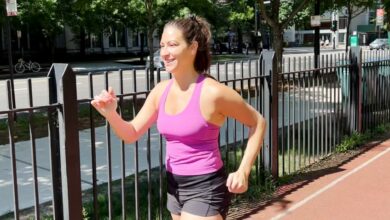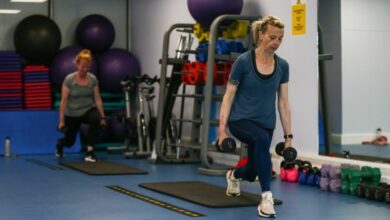
Water or land based exercise should provide some short-term benefit in pain management for hip osteoarthritis, though there are few well-designed trials testing it, according to a new review.
Americans develop three million new cases of osteoarthritis each year. Most vulnerable are those who are older, obese, have previous joint injuries, overuse, weak muscles or genetic risk factors.
“It is nice to finally have some hip-specific data, as hip and knee osteoarthritis are often grouped together and it is almost certain that there are differences between these groups of patients, as well as differences in those with multiple joint osteoarthritis,” said Dr. Amanda E. Nelson of the Thurston Arthritis Research Center at the University of North Carolina Medical Center in Chapel Hill, who was not part of the new study.
“However, the studies are still small and heterogeneous, and larger, longer-term studies of more specific interventions are certainly needed to provide more specific recommendations,” she said.
The review only considered pain, not joint function, which may also improve with physical activity, Nelson told Reuters Health by email.
The researchers, lead by Kay M. Crossley of La Trobe University in Bundoora, Australia, reviewed 19 studies of water-based or land-based exercise therapy or manual therapy for hip pain, 10 of which were designed specifically for hip osteoarthritis.
Four studies found short-term benefits, up to three months later, with water-based exercise compared to minimal pain management. Six found similar benefit for land-based exercise therapy in the short term, but there was no evidence for benefit in the medium or long term, up to one year after therapy.
Manual therapy, which includes joint manipulation, active stretching and massage, did not appear to provide additional benefit on its own or in combination with exercise, the researchers reported in the British Journal of Sports Medicine.
That’s not encouraging, said Dr. Kim Bennell of The University of Melbourne in Australia, who was also not part of the review. “However, the number of studies is relatively small and there was a lot of variation in the methods of the studies, so further research is needed in this area to confirm the results.”
Most doctors do not recommend exercise therapy, relying instead on pain-relieving drugs for osteoarthritis, despite agreement across guidelines and organizations that non-drug approaches are worthwhile, Nelson said.
“There are numerous potential barriers to recommendation and treatment including access to care, financial concerns, and the burden of managing multiple medical conditions in a short visit with a provider, among others,” she said. “Therefore, although the guidelines are in agreement, it is likely that the majority of patients are not receiving this recommendation from their providers, and that even fewer actually follow through on the recommendation if given.”
The 19 studies in the review all tested different type, frequency and duration of exercise, so the best sort of exercise, how much and how often to do it, remains to be determined, she said.
It would appear that a 12-week program with exercises generally including strengthening and range of motion three times per week is beneficial, Bennell told Reuters Health by email.
“Based on the overall body of work in physical activity, though, any regular physical activity is likely to be beneficial to most patients,” Nelson said. “It is safe to say that most adults do not get enough physical activity, and that this is even more of an issue among those with osteoarthritis.”




